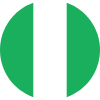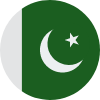Financing the Sustainable Development Goals
The SDN – joint work between the IMF Fiscal Affairs and African Departments (FAD and AFR) – is built on a novel tool to assess development financing strategies. It seeks to gauge the different financing options available to countries, and help answer the question whether sufficient financing is available to meet the SDGs by their 2030 target date. The tool allows to monitor the performance of the economy on funding SDGs in five key development areas: education, health, roads, electricity, and water and sanitation. and to assess additional financing options.
The tool has been applied to four case studies – Rwanda, Nigeria, Cambodia, Pakistan – to gauge the financial resources needed to achieve the SDG targets in these development areas and assess alternative policy options to meet these needs.
Event: IMF Managing Director Kristalina Georgieva & Ian Goldin in conversation: "Roadmap to the Sustainable Development Goals"
Case Studies
SDG Financing
Rwanda

Rwanda is a fast-growing sub-Saharan economy with a sizeable public sector. Starting from a low base, Rwanda has made swift progress on social and economic development over the past two decades. Along with rapid economic growth, poverty levels fell from 60% in 2000 to 38% in 2019, and its human development index value doubled to 0.52 between 1990 and 2019. Still, more effort is needed if Rwanda is to achieve the SDGs by 2030.
Download IMF Working Paper: SDG Financing Options in Rwanda: A Post-Pandemic Assessment
Nigeria

Nigeria is a natural resource economy with a small public sector. As Africa’s most populous country and its largest economy, Nigeria is key to global achievement of the SDGs. In the period up to 2015, the country made good progress on development amid rapid population growth, reducing extreme poverty by some 20 percentage points while improving health indicators and lowering the HIV/AIDS infection rate. However, much remains to be done, with healthy life expectancy at birth at 49 years and only 4% of the population connected to a safe water supply. Even before the COVID-19 crisis struck, growth had decelerated and was projected to remain lackluster, making it that much harder to achieve development goals.
Cambodia

Cambodia ranks among the fastest-growing economies in Southeast Asia. Remarkable progress has been achieved in meeting some SDG targets including eradication of extreme poverty. Over the past decade spending on health and education doubled and tripled, respectively, allowing Cambodia to become one of the top ten performance improvers globally based on the UNDP’s Human Development Index. The SDG framework was incorporated into the county’s National Strategic Development Plan 2019–2023, with relevant national targets, estimates of spending needs, and their financing sources adopted by line ministries.
Pakistan

Pakistan, a large emerging economy, achieved mixed economic and social development results over the last two decades. While Pakistan has made some progress on development amid volatile economic performance and fast population growth, its performance in critical SDG sectors lags behind that of its emerging market peers. In the areas of education, water, and sanitation it is below the LIDC average (Brollo, Hanedar, and Walker, forthcoming; IMF 2021a). Still, poverty (according to the national poverty line) fell by 40% to 24% between 2000 and 2015.



